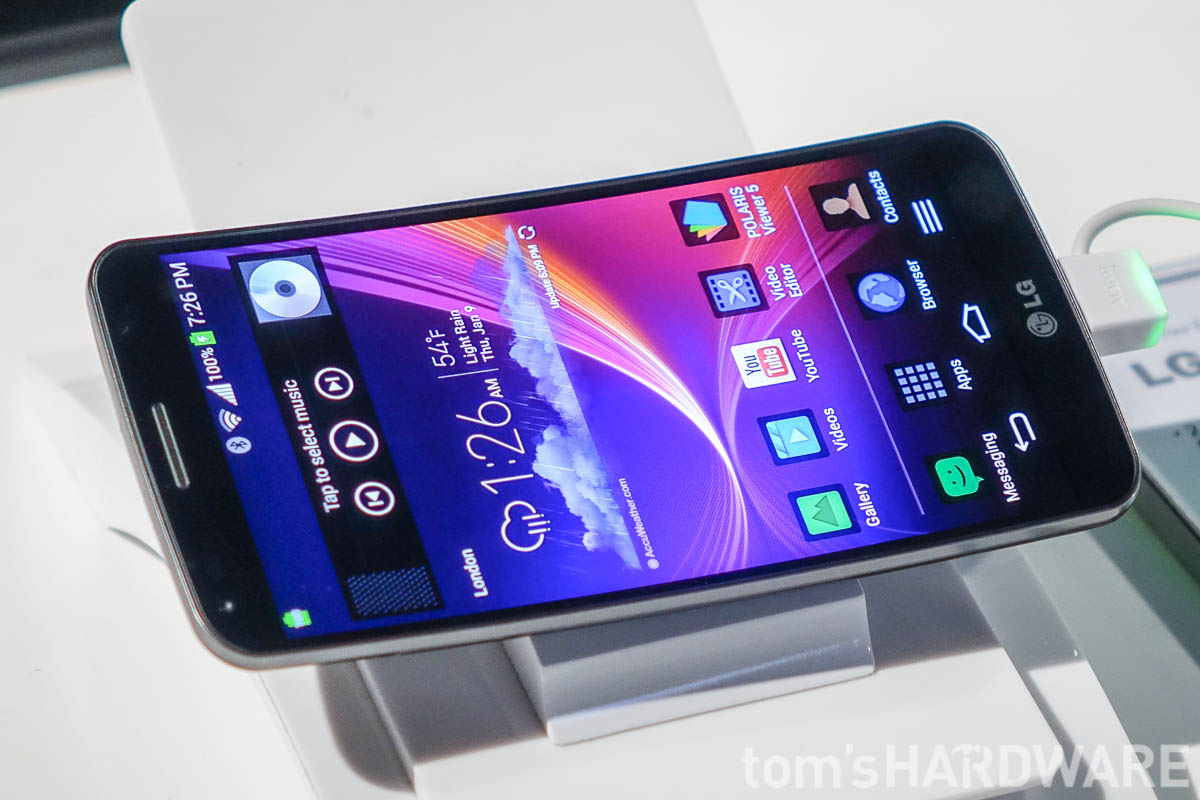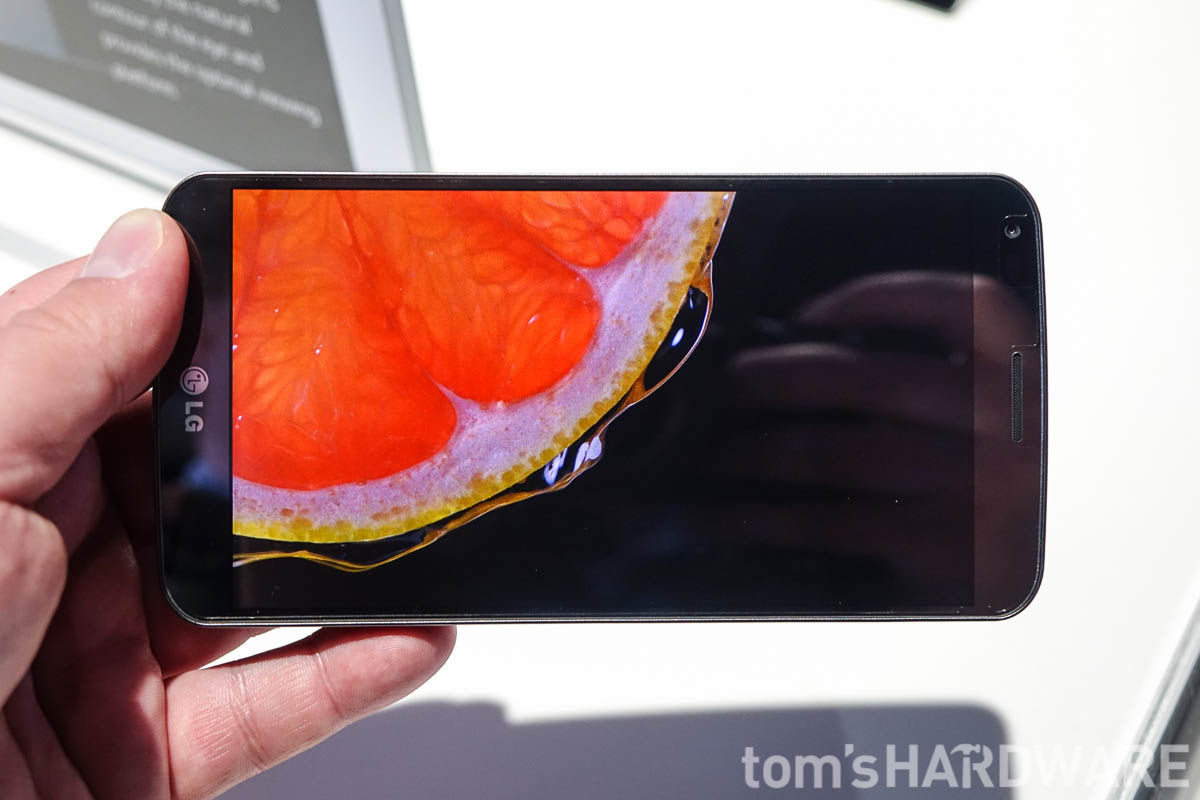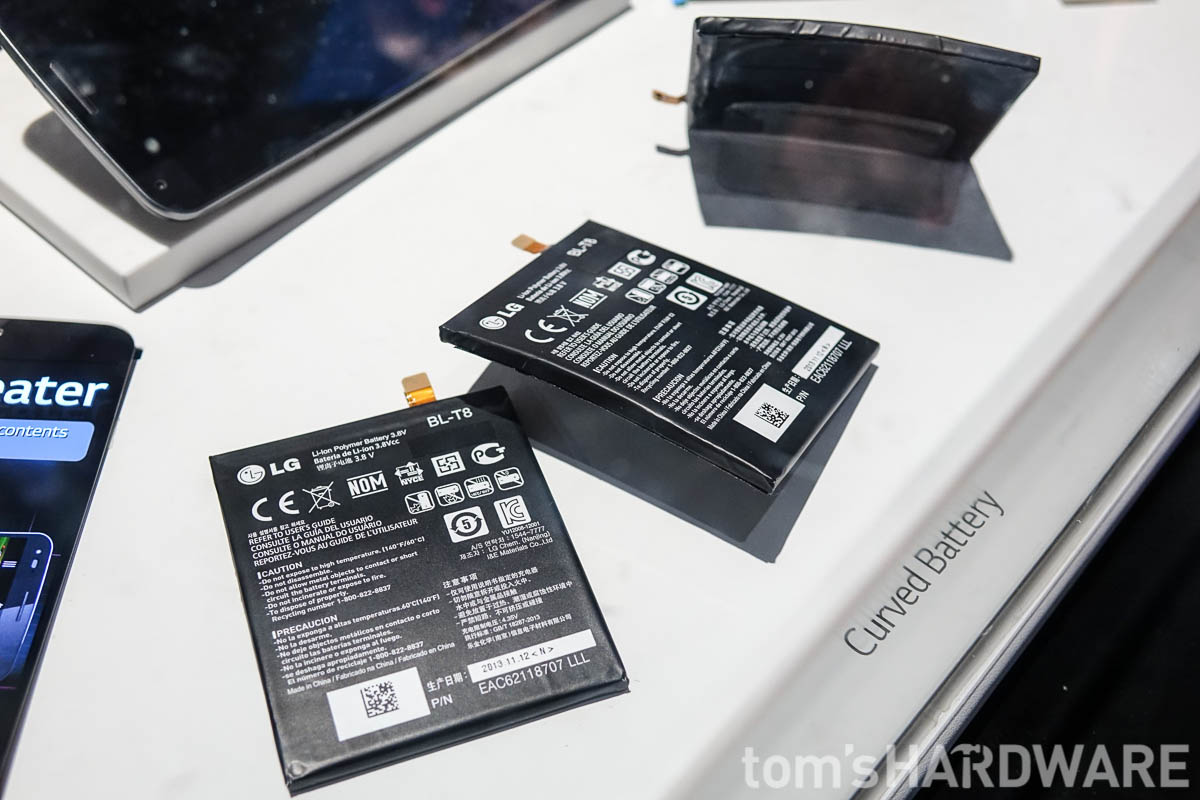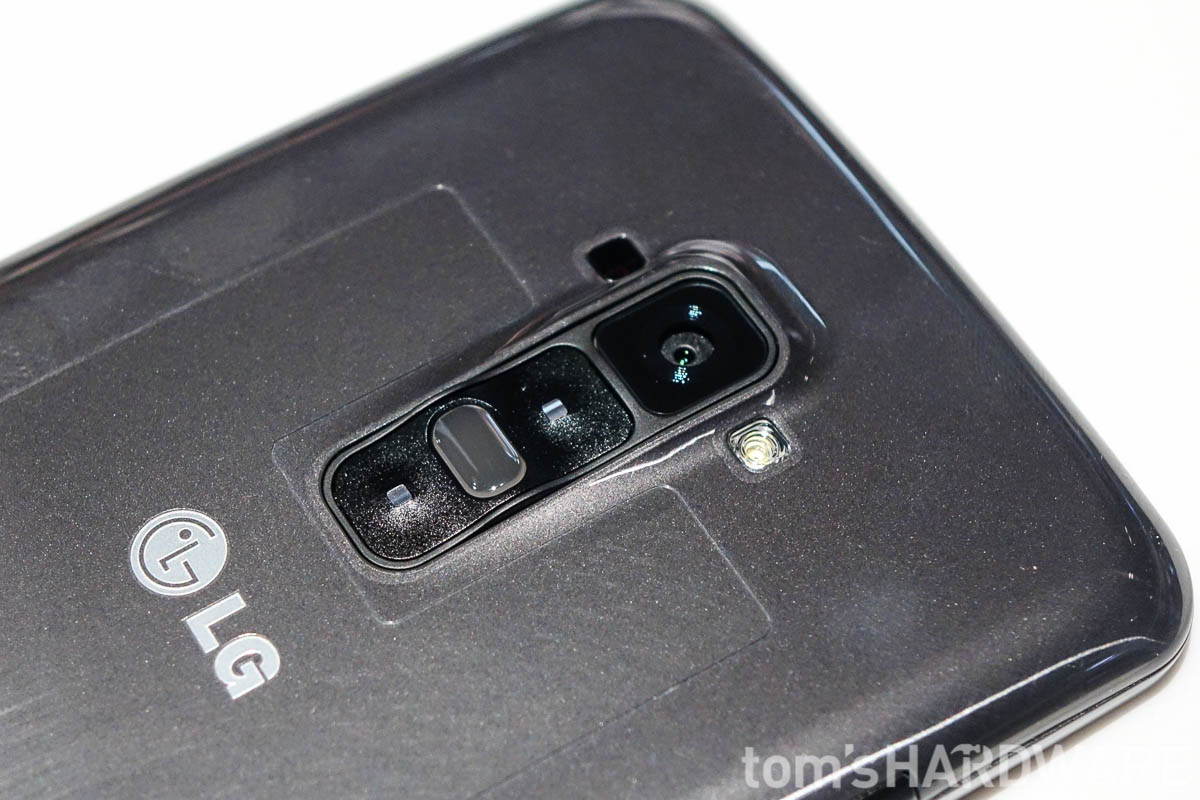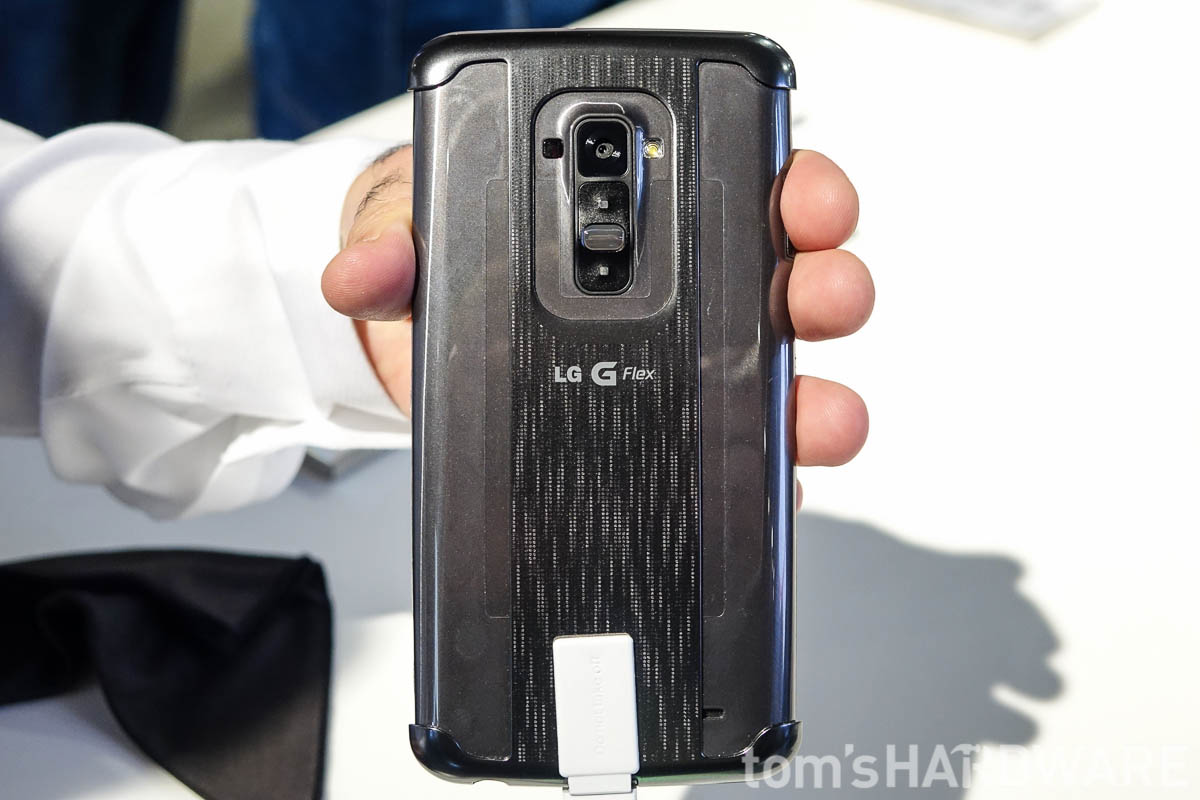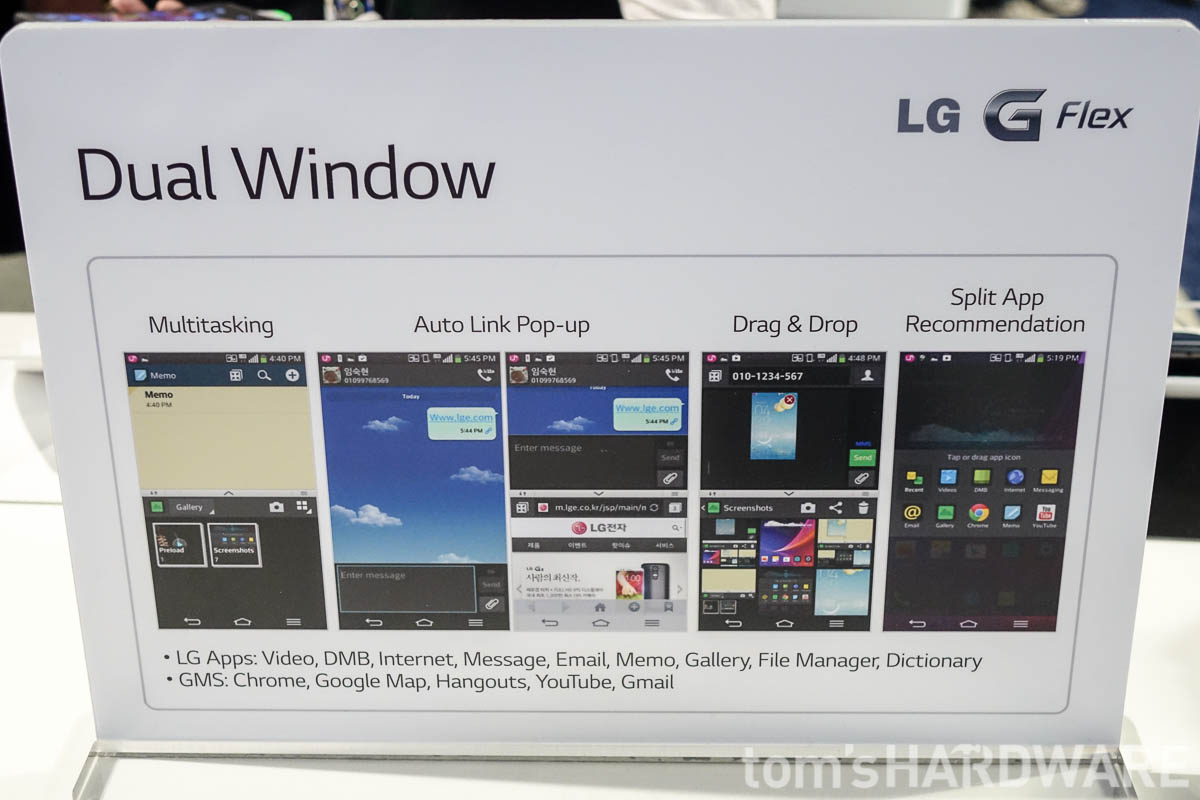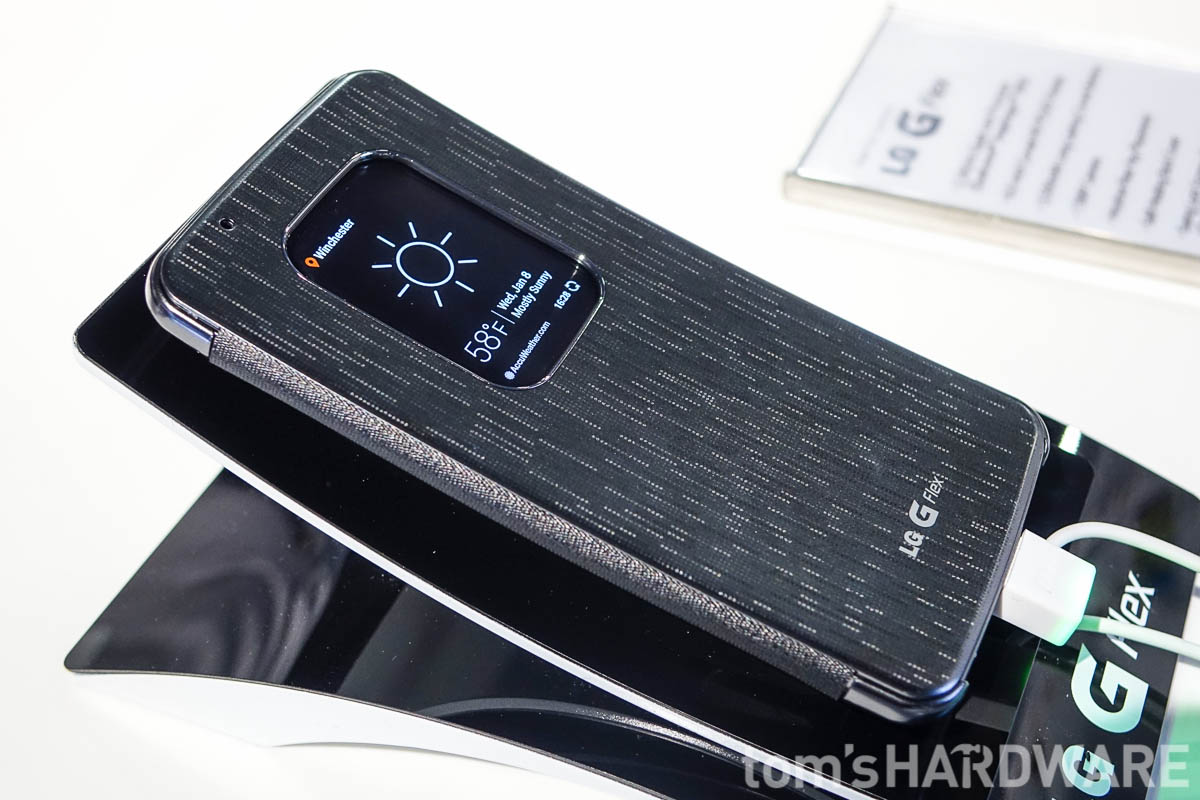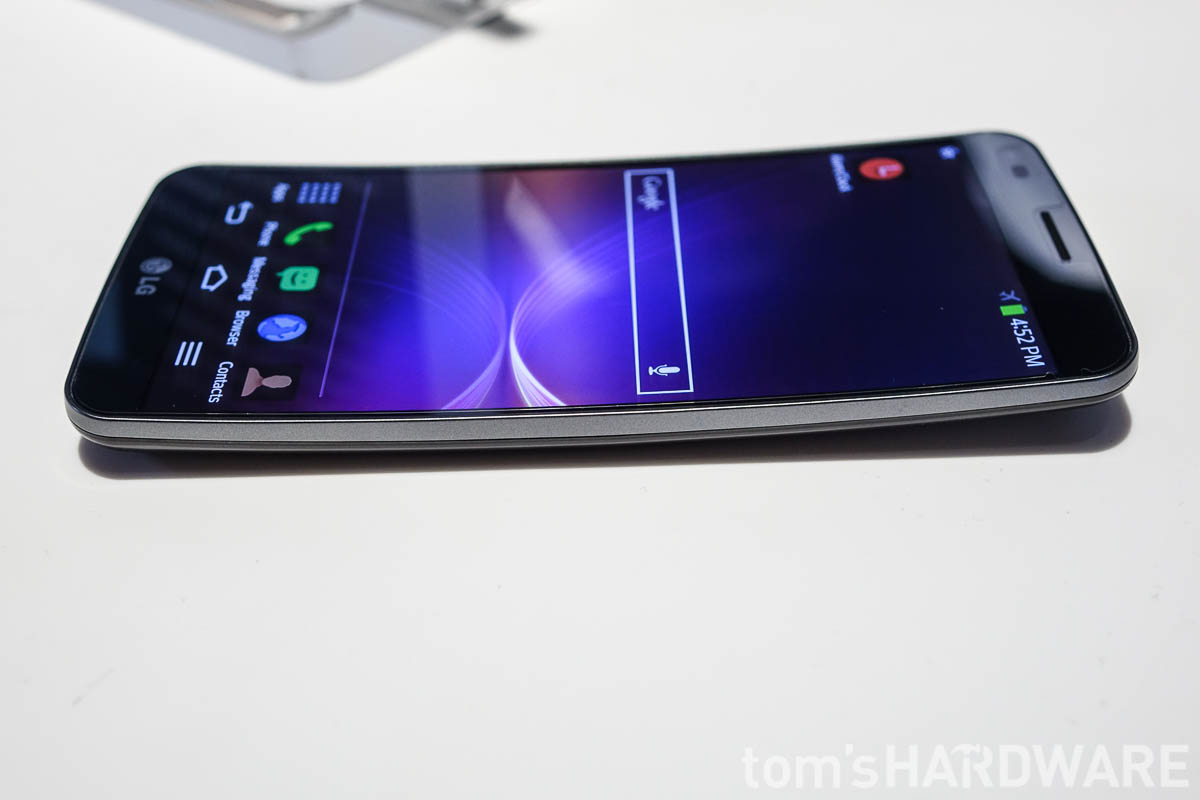LG Demonstrates Self-Healing G Flex Curved Phone
LG's G Flex heals like Wolverine.
At this year’s CES LG was showing off its latest phone, the G Flex, one of the first curved phones to hit the market, and while LG was treating it as a brand new device at the show, in actually fact it has been available in Korea for a few months, and a few other countries since last month. However, what was announced recently was North America availability – it was announced that the G Flex will be available on AT&T, Sprint and T-Mobile in Q1. Yesterday Sprint added to that, by announcing the price, $300 on a 2-year term, release, January 31, and that it is starting to take pre-orders today. We got a chance to go hands-on at LG’s big display for the G Flex at CES, which highlighted its unique calling cards, the curved display and its ‘self-healing’ scratch resistant finish, and you can check out some pictures, video and our thoughts about this unique phone below.
The first thing that you’ll notice about the G Flex is that it is a BIG phone. Yes, the G Flex is a phablet, not a phone. It has a 6-inch display, but at least the bezel is pretty minimal, so while big, it’s still smaller than the Lumia 1520 and HTC One Max, which also have similar sized screens, but only by a few millimeters. The curved screen uses flexible P-OLED technology and looks great. It has the inky deep blacks and colors that pop that OLEDs are known for. Of course, compared to the lovely IPS panel in the LG G2, I’m sure the color accuracy suffers on the G Flex’s screen. Also, it’s just an HD (720p) screen, which means that the G Flex has a PP1 245, which is pretty coarse for a modern smartphone, especially when many of us are used to staring at the super-crisp high PPI screens of other devices. We couldn’t get a reason for why the screen is just HD, probably something to do with the manufacturing process that LG uses not making it cost-effective to make a full HD panel yet, but it is interesting that the other curved screen phone, the Galaxy Round does have a 1080p display.
The battery is nice and big, at 3,500 mAh, and is also flexible, but sadly non-removable, as is the case with most phones today. The combination of the flexible battery and screen though allows the G Flex to do something pretty amazing – you can actually press down on it with your hand and flatten it without breaking it. In fact, an LG rep demonstrated the G Flex’s durability to us by stepping on it! Unfortunately, LG didn't want us photographing or videoing this since we guess it don't want people to get the impression that the G Flex is designed for this extreme amount of flexing. We guess the point is that if you DO happen to accidentally sit on it, it’s less likely to break that other high-end smartphones.
The rest of the G Flex's design follows the LG G2's lead, with the rear volume control and power buttons below the camera on the back, and this is also where you'll find the G Flex's other unique feature. The back is coated in LG's new 'self-healing' finish, which is designed to get rid of the kind of fine scratches you'd get from keys rubbing against the phone in your pocket, and you can see in the video below that this finish works really well for those kinds of scratches. However, it won’t protect the phone from deeper scratches, so don't go hacking away at your brand new G Flex with a knife to show off this feature to your friends. Still, LG must be pretty confident in the finish since it was showing a unique case it called the Vest - this case protects the top, corners and area around the camera, but leaves most of the back and sides exposed for the ‘self-healing’ finish to work its magic.
The G Flex is powered, like the G2, by a 2.26 GHz Snapdragon 800, which is, at least for now, the best mobile processor available, and since the 800 is also very power efficient, the 3,500 mAh battery should allow for some outstanding battery life. The phone also has 32 GB of storage, but, as expected, no microSD card slot and 2 GB of RAM. The 13 MP rear camera is also the same as the G2’s, apart from that there is sadly no OIS on the G Flex – LG says it couldn’t get the current module to fit in the dimensions it had to work with. This shouldn’t make a huge difference in most shooting situations, but will certainly impact low-light performance.
We didn't get a chance to play with the G Flex's software for very long at the show, but it's very similar to what can be found on the LG G2. It does look like LG has updated the icons to be a little less garish than those on the G2, but sadly the G Flex is still stuck on Android 4.2.2, which is a bit of an oversight by LG. A phone launched in 2014 should at least ship with 4.3, if not 4.4. What LG has done is added a few unique software features to the G Flex - Fluid Lock is a more dynamic lock-screen that changes its background image depending on the time of day, QuickTheatre allows you access photos, videos and YouTube directly from the lock screen, and Dual Window allows two apps to be used at the same time on the same screen, just like Samsung's Multi Window mode. All the other unique LG additions to Android that can be found on the G2, like KnockOn and Slide Aside, can also be found on the G Flex.
The LG G Flex is coming to the U.S. on Sprint at the end of the month for $300 on a 2-year term, and to AT&T and T-Mobile soon after. It should also be coming to Canada too, but there has been no official announcement yet. However, when LG Canada is tweeting about the G Flex, that tells you something is about to happen.
Get Tom's Hardware's best news and in-depth reviews, straight to your inbox.
-
Blazer1985 Yeah, the title brought my mind a few months back :-)http://www.tomshardware.com/news/lg-g-flex-self-healing-scratch-text,25154.htmlReply -
soldier44 I stopped reading at 720p. For $300 and it being 2014 you would think 1920 x 1080 would be standard for a phone like this. Nope. Waiting for a truly flexable/bendable screen phone later this year. Note 4?Reply -
cypeq Unless tape slip is glued in the battery is pretty much removable.ReplyI stopped reading at 720p. For $300 and it being 2014 you would think 1920 x 1080 would be standard for a phone like this. Nope. Waiting for a truly flexable/bendable screen phone later this year. Note 4?
It's like first... did you expect them to go super amoled uhd with this ? -
teh_chem I love my LG Optimus G--still a powerhouse, and I have no real reason to upgrade to anything else ATM. But the G Flex is a poorly designed phone in many ways. The only purpose for a curved screen is to say you have a curved screen. It brings nothing. The only purpose to have a slightly flexible phone is to say that you have a flexible phone. Again, brings nothing to the device. Drop and durability tests have shown that the G Flex is no more durable/resistant to breakage than any other smartphone.Also, please, abandon the buttons on the back side of the phone. They must have ignored ergonomics testing with this design. I wish button layouts for power/lock and volume +/- would go back to the power button being at the top of the phone, and volume +/- being on the side of the phone. I hate the new trend where the power button is on one side of the phone, and volume +/- are on the other side of the phone--it's easy to hit screen lock when you want to change the volume. Putting the buttons on the back of the phone were not the answer...especially with one-handed operation!Reply
